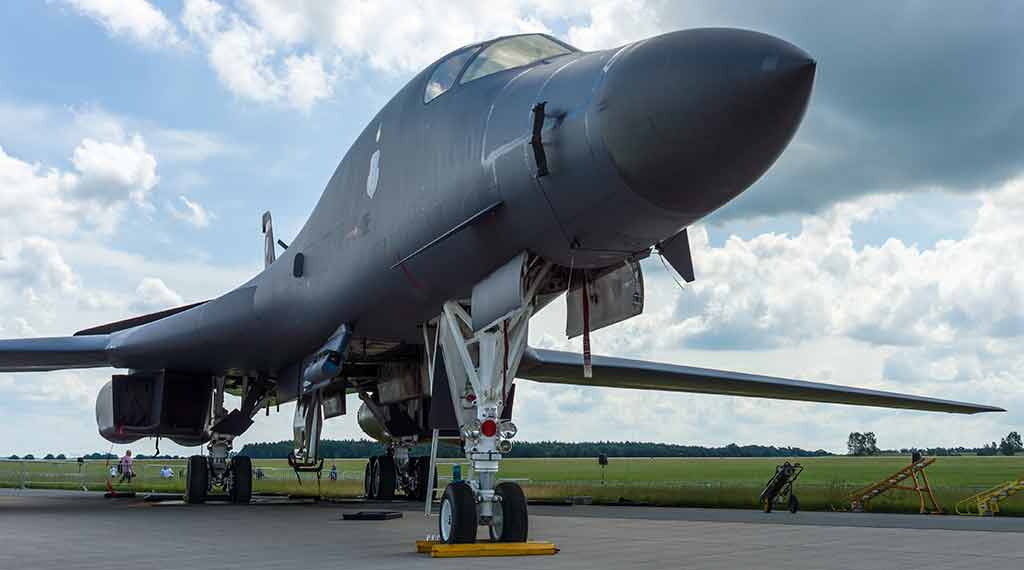What does a B-1 bomber crash tell us about CCP monitoring of US military bases?

The crash of a B-1 bomber on approach to Ellsworth Air Force Base was the loss of a high-value airframe, but fortunately, the even more important crew survived.
Originally, 100 B-1Bs were made during the Reagan years to supplement the aging B-52 force, which, at the time, still included D, E, F, G, and H models of the B-52. As part of arms control treaty protocols with the Soviet Union, the B-1s were “neutered” in the 1990s and rendered incapable of carrying nuclear ordnance.
Today, there are less than 50 of these B-1Bs still flying. They’re considered a higher operating cost airframe than the remaining approximately 75 B-52H models. They can carry 24 long-range missiles on rotary launchers in their three bomb bays, four more than the 20 missiles that a B-52H can carry, which can only fit one rotary launcher internally, and the other 12 missiles have to be carried on massive underwing pylons.
There are still several dozen B-1s in the boneyard at Davis-Monthan Air Force Base that can be regenerated back into service if the Air Force so decides. The Air Force has reluctantly kept the B-1Bs, but its large magazine of missiles can provide a powerful deterrent in the Western Pacific. The B-1 bomber that crashed at Ellsworth Air Force Base is probably unsalvageable for service.
How do we know it’s unsalvagable?
The videos and photos from private, closed-circuit television (CCTV) cameras overlooking Ellsworth provide this real-time evidence—which is concerning. If the American public can see this clearly on the Ellsworth airfield, it’s highly likely that a foreign adversary is already in place inside this network and taking full advantage of this intelligence.
CCTV Cameras
Huawei, the Chinese telecommunications giant, and DJI, the Chinese consumer-grade drone company, receive great attention as the vanguard of Chinese “civil-military” fusion efforts that enable vast intelligence collection capabilities.
Often overlooked in this concern is Hikvision, a company that makes CCTV camera systems, which have been identified as a pervasive surveillance tool inside of China to monitor and efficiently conduct repression of Uyghurs and others on a vast scale. Hikvision is considered the flagship product line for China in the CCTV market and is proffered to customers around the world.
There have been cybersecurity concerns over the vulnerabilities of the Hikvision offerings. The Department of Homeland Security’s Cybersecurity and Infrastructure Security Agency (CISA) has identified this and released substantial guidance on this matter and remediation of these access points for hackers to enter into a Hikvision CCTV system. The Hikvision CCTV offerings are pervasive and ubiquitous in the critical infrastructure domain for the private sector, as well as federal, state, and local governments.
The Department of Defense (DOD) has moved to purge its vast domain and information technology networks of Hikvision and other offerings of concern. The Ellsworth Air Force Base crash represents one new and unanticipated angle on the pursuit and removal of Hikvision from the DOD world. The CCTV system that took the pictures and video of the crash site wasn’t a DOD-owned and -operated CCTV system—it was off-base and owned by a local media outlet yet had a distinct vantage point of at least a portion of the base.
With the CISA and DOD vulnerability concerns, it’s possible that nefarious actors discreetly benefited from the same vantage point of this CCTV without the knowledge of the media outlet.
What could go wrong?
- Taiwan mobilizes 400,000 to bolster civil defense - November 1, 2024
- A way forward on Taiwan? - September 28, 2024
- US should speed up bolstering its Arctic strategy to counter China’s ambitions - September 16, 2024
